Is wine bad for you?
Sure, some research cautions about an increased risk of cancer. It’s also clearly not something you want to drink before using a chainsaw or driving a minivan.
And some people abuse it.
Then again, wine comes from grapes, which contain health-promoting phytochemicals. And some research points to a potential heart benefit, albeit a small one.
What’s more, you might be a person who has the ability to enjoy it responsibly and in moderation.
So the answer is… it depends.
You could say the same about a range of foods, diets, and nutritional strategies.
That’s because, when it comes to nutrition, there’s a lot we don’t know for sure.
Which can make it pretty hard to give cut-and-dry answers on what to eat for better health.
But if you’re a coach, your clients don’t want to hear “it depends” and “we need more research” every single time you open your mouth.
They want real guidance.
That’s why they hired you, isn’t it?
So what nutrition concepts can you really be confident about?
As it turns out, almost everyone agrees on five evidence-based principles.
And we’re pretty sure about one more.
Plus, there’s a reliable process you can use to evaluate everything else. (More about that at the end of the article).
But before we get into what we know with almost 100 percent certainty, let’s explore why and how we know it.
How many studies does it take to confirm a nutritional claim?
We can’t answer that question with a specific number.
Truth is, nothing in science is ever completely certain. But we can get pretty darn close by weighing five main factors.
(Want more deep insights and helpful takeaways on the hottest health and nutrition topics? Sign up for our FREE weekly newsletter, The Smartest Coach in the Room.)
#1: Quantity
How much research is there? Only a few studies? Or hundreds?
The more vast the body of research, the more confident you can feel about a specific finding or theory.
#2: Quality
We look for research conducted by people at the top of their field and published in well respected, peer-reviewed journals.
Specifically, we want to see:
Randomized controlled trials that test a specific treatment on a group of participants. Another group of people (the placebo group) doesn’t get the treatment. But both groups think they’re getting it.
Systematic reviews that discuss the available studies on a specific question or topic. Typically, they use precise and strict criteria for what’s included.
Meta-analyses that use complex statistical methods to combine the findings of several studies. Pooling together the data from many studies increases the statistical power, offering a stronger conclusion than any single study.
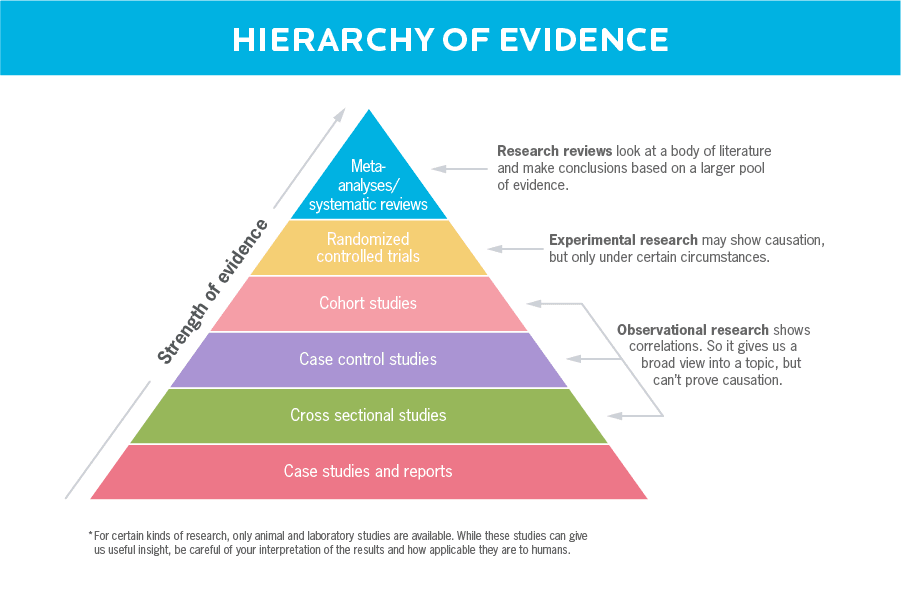
#3: Scope
We look for research that dates back decades rather than studies that just started appearing during the past few years.
#4: Consistency
Our confidence goes up when many studies arrive at the same conclusion rather than opposite ones.
#5: Universality
Studies have looked at how a nutritional concept affects different types of people, under different conditions, in different geographic locations.
(For a deeper dive into all of this, check out: How to read scientific research.)
5 universal principles of good nutrition
So which nutrition claims pass the five-factor test?
Let’s explore.
Principle #1: Weight loss and weight gain come down to one key equation.
Everyone knows this one, though not everyone believes it. It’s the energy balance equation, also known as calories in, calories out (or CICO for short), and it looks like this:
[Energy in] – [Energy out] = Changes in body stores
In other words:
When you take in more energy (or calories) than you burn, you gain weight.
When you take in less energy than you burn, you lose weight.
When you take in the same energy as you burn, you maintain.
So you might be wondering: How do we know this with absolute certainty whereas “wine is bad/good for you” is still up for debate?
First, like gravity, this principle is easy to test. With gravity, you can continually release a heavy object. No matter how many times you try it, the object falls.
It’s the same with energy balance. If you reduce “energy in” and increase “energy out,” you always get the same result: Bodyweight goes down.
Second, the energy balance equation comes from the first law of thermodynamics: Energy can neither be created or destroyed, only transferred from one state to another.
Humans can’t create energy from nothing. We convert it from food. And any excess energy we take in doesn’t magically vanish: Your body either increases “energy out” (often by turning up the metabolism) or stores the excess.
Scientific laws are as close to facts as we can get. Can they be updated over time? Sure. In this case, however, the law has stood firm for well over a century.
So, why do some people say “Not all calories are equal!”?
In a word: confusion.
As you can see from the illustration below, many complex factors influence “calories in” and “calories out.” Your brain, especially, can turn up or turn down metabolism, exerting a massive influence on “calories out.”
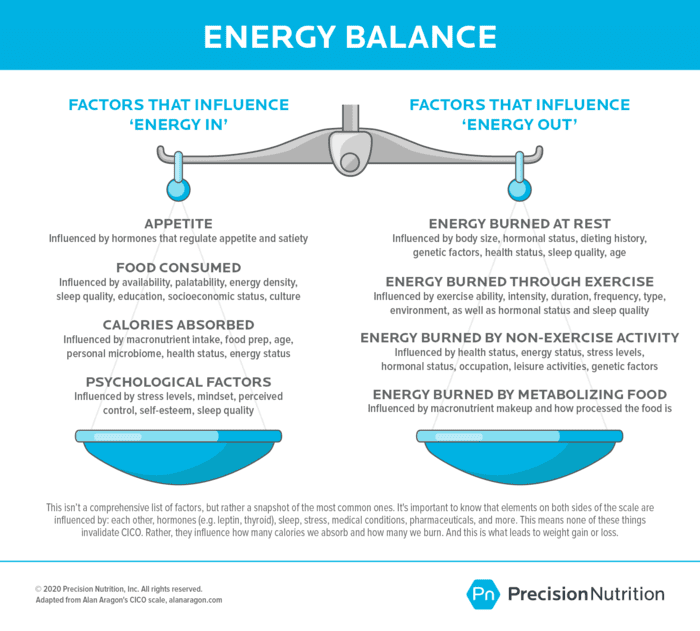
To better understand the universality of energy balance, let’s circle back to another law you may have studied in physics class: the law of gravity.
Like energy balance, it’s also represented by the equation F = ma (force equals mass times acceleration). The basic equation applies to every object, dropped from any height. But a lot of factors affect it—like air resistance—making it seem like it’s not true.
Similarly, with food and humans, the basic equation never changes. It’s true of all foods consumed in all situations.
But, lots of factors can affect different parts of the equation.
What does this mean for you?
If someone wants to gain or lose body mass, they’ll want to consider overall energy balance and how to shift it in their favor. Here are a few ways to do just that. (For a deeper dive, check out calories in, calories out).
| To reduce calories in: | To increase calories out: |
|---|---|
| Consume more fiber-rich vegetables to reduce the number of calories your body absorbs. | Add cardio to burn more calories. |
| Consume more protein to reduce appetite and therefore overall energy intake. | Add strength training to build more muscle, boost overall metabolism, and burn more calories. |
| Eat slowly so you can tune into hunger and fullness signals, and stop eating when you are satisfied, not stuffed. | Increase daily activity by taking the stairs, parking farther from your destination, and/or using an activity tracker to nudge you to take more steps. |
| Use hand portions to guide how much you eat. | Boost protein intake to increase the thermic effect of digestion. |
| Get enough sleep to reduce hunger and cravings for sweets. | Practice self care to reduce stress and improve sleep—both important for a healthy metabolism. |
Principle #2: Protein is the most important macronutrient to get right.
Why? Two reasons.
Reason #1: It helps you eat less, without feeling so hungry.
Research consistently shows that protein helps you feel full longer and, as a result, lose weight.
That’s, in part, because it takes longer for the body to break down protein than carbs or fat.
Protein also stimulates the release of satiety hormones in the gut.1,2
So when you eat protein, you naturally tend to eat less.
And it makes a big difference. Doubling your protein intake could help you to spontaneously consume 400 fewer calories a day. For reference, that’s roughly the number of calories in 1 ½ cups of ice cream.3
On one day, eat 6 to 8 ounces of plain skinless chicken for every meal. Then track your hunger for the rest of the day, rating it once an hour on a 1 to 5 scale.
The following day, eat 1 ⅔ to 2 cups of cooked pasta for each meal. Again track your hunger on a 1 to 5 scale.
Then take a look at your data to see which method resulted in higher hunger ratings over the course of the day.
Reason #2: Protein makes it easier to build and maintain muscle.
Without adequate protein, our bodies just can’t function well. We need amino acids (protein’s building blocks) to produce important molecules like enzymes, hormones, neurotransmitters, and antibodies.
So when we don’t eat enough protein, our bodies plunder it from elsewhere, like our muscles, resulting in muscle loss. This is especially true if we’re eating fewer calories than we’re burning.
On the flip side, a high-protein diet seems to maximize muscle protein synthesis, which should lead to more muscle gain for people who are strength training and consuming enough calories.
This is probably one of the reasons high-protein diets are better for improving body composition than normal or low-protein diets.
A review of 38 studies found that, for people who are out of shape, consuming extra protein won’t magically build any muscle—no surprises there. But for people who are really pushing themselves in the gym, eating more protein seems to boost their results, helping them gain even more muscle.4,5
What does this mean for you?
The right amount of protein for each person varies on a number of factors such as age, gender, and goals.
Someone interested in packing on muscle for a bodybuilding competition might aim for as many as 50 grams of protein (or about two palm-size portions of meat) at every meal. Someone hoping to work off 20 extra pounds is going to need much less than that.
Our free calorie and macro calculator can help you determine the right amount of protein for yourself or a client. Just plug in your info, and it’ll show you how to use hand portions to get enough protein (and carbs, fats, and calories) to meet your individual goals.
Principle #3: As food processing increases, nutrient density decreases.
Minimally-processed whole foods (such as grains, nuts, eggs, and fish) contain a vast selection of vitamins, minerals, phytonutrients (plant nutrients), and zoonutrients (animal nutrients).
Though we’re still unraveling exactly which nutrients do what, a wealth of research consistently points to one resounding conclusion:
Humans are healthier when they consume more whole foods and fewer refined ones.
This is probably because the greater the degree of processing, the higher the likelihood that a food:
- Has lost nutritional value, such as fiber, essential fatty acids, vitamins, minerals, phytonutrients, and zoonutrients.
- Has gained additives, preservatives, fillers, sugar, sodium, unhealthy fats, and/or refined starch.
This is a lot easier to see when you compare specific whole foods to their more highly-processed equivalents.
As you can see below, the less-processed steak and potato dinner contains about 350 fewer calories and a fraction of the sodium as the fast food burger with fries, as well as a heck of a lot more protein, fiber, and other nutrients.

That’s just one comparison.
But you could analyze any whole food along with its more refined counterpart and see similar differences in calories, sodium, and nutrients.
So it makes sense that a diet rich in minimally-processed whole foods can lead to lower rates of heart disease, cancer, depression, and type 2 diabetes, among other health problems.6-11
Minimally-processed whole foods are also rich in fiber and/or protein—two nutrients that help bolster satiety. And they tend to have fewer calories per serving than highly-processed refined foods.
Both traits make it easier for us to control our weight.
One randomized controlled trial even found that people ate a stunning 500 more calories per day when they consumed a diet rich in ultraprocessed foods compared to a diet rich in minimally-processed whole foods.12 That’s essentially the equivalent of consuming an extra meal a day.
In fact, minimally-processed whole foods may be what all successful diets share in common.
Recent studies have shown that participants experienced the same amount of weight loss—regardless of carb or fat intake—as long as they minimized their consumption of refined sugars, flours, and other processed foods while emphasizing whole foods like veggies.
They also experienced similar improvements in blood pressure, insulin, glucose, and cholesterol levels.13,14
What does this mean for you?
We’re 100 percent confident about the importance of whole foods, but we’re also extremely confident about something else:
Progress is much more important than perfection.
So rather than separating foods into “whole” and “not whole” categories, imagine a spectrum. As you can see from the graphic below, as food becomes more processed and refined, it loses a little bit of its nutritional power.
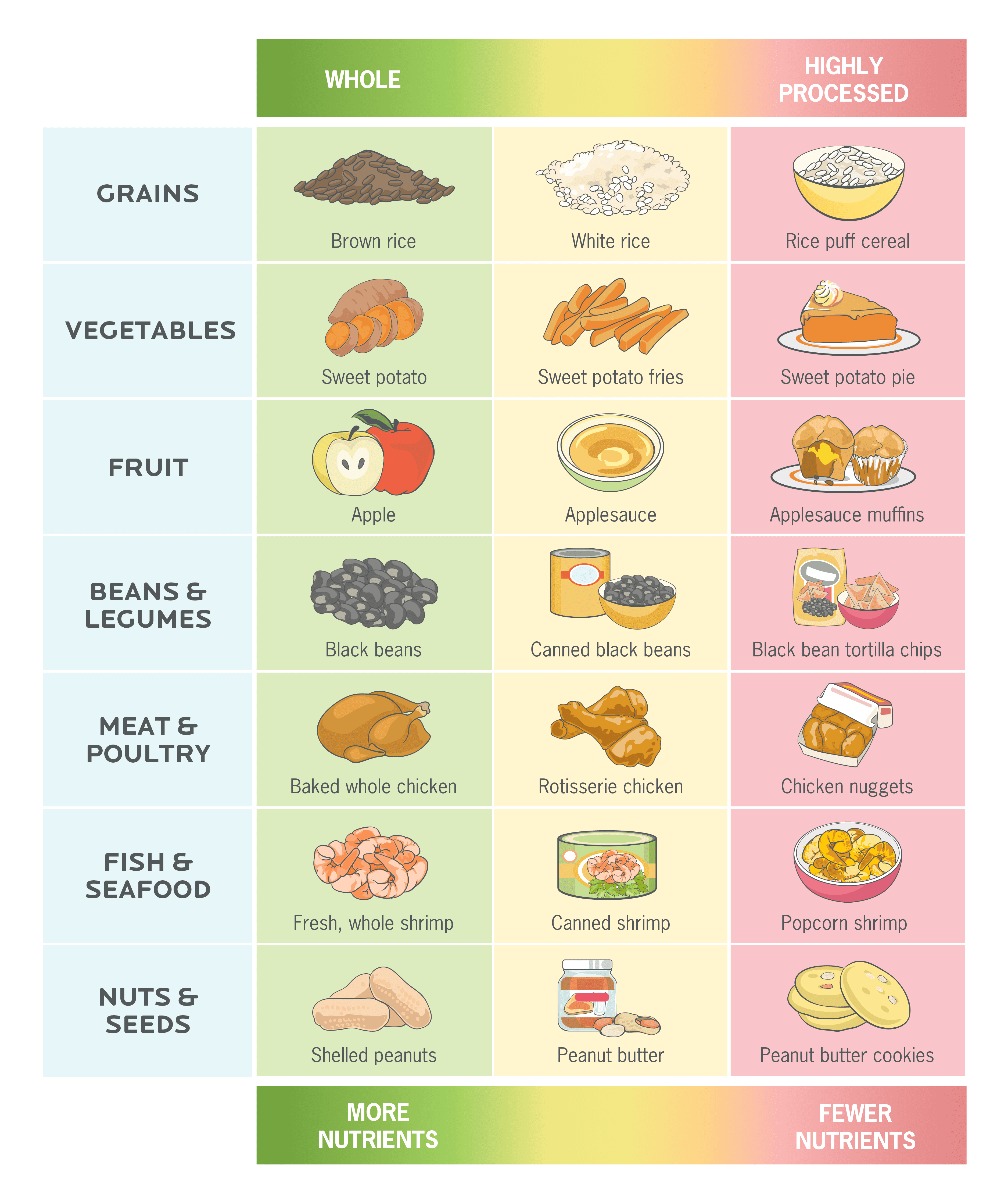
The goal with whole foods isn’t to get things “perfect.” Instead, focus on making them “just a little bit better.”
A rotisserie chicken from the supermarket may not be a pastured, lovingly hand-raised, heritage Chantecler roasted in a high-end convection oven… but it sure beats chicken nuggets.
(For ideas on how to do this, check out: What should I eat?)
Principle #4: Fruit and vegetables reduce disease risk—and may help you lose weight, too.
Among the various types of whole foods, produce deserves special mention.
Fruits and veggies are loaded with health-promoting antioxidants, vitamins, minerals, fiber, and phytonutrients.
And a huge body of evidence from the past 20 years definitively shows that consuming more produce can help prevent a wide range of health problems, including diabetes, stroke, heart disease, high blood pressure, and cancer.
For example, by simply increasing vegetable and fruit intake, experts predict that we could prevent 20 percent or more of all cancer cases, and avoid approximately 200,000 cancer-related deaths annually.15-19
An increasing number of studies also suggest that consuming a diet rich in antioxidant and anti-inflammatory foods such as fruits and vegetables may lower the risk of developing neurodegenerative disease.20-22
And, when it comes to cognitive performance, food beats supplements. Once nutrients, such as antioxidants, are isolated from produce and inserted into capsules, they seem to lose some (perhaps all) of their power.
Finally, an eating pattern rich in produce can help you more easily control your weight. This effect is thanks to their fiber and water content, which helps fill you up on fewer calories. An entire head of cauliflower, for example, contains only about 150 calories.23,24
What does this mean for you?
No one fruit or veggie is king. Rather than sticking to one magic powerfood—for example, eating blueberries every single day—aim for a variety. Try to eat a wide rainbow of colors everyday, using this chart for guidance.
(Hate veggies? Don’t worry! This infographic will show you how to fall in love with them.)
Principle #5: Sleep affects what you eat—as well as your overall health.
In coaching over 150,000 clients, we’ve seen one issue pop up a lot. People can nail everything with their nutrition but still struggle to reach their goals.
Often, that’s because they’re not getting enough sleep.
And they only make progress once they prioritize sleep.
What’s the connection?
If you sleep 5 or 6 hours when you really need 7 or 8, you keep your body in a chronically sleep-deprived state, impairing your body’s ability to regulate several key hormones.
- Ghrelin levels rise, triggering hunger.
- Leptin falls, so it takes longer to feel full.
- Endocannabinoids increase, making your perception of foods seem more pleasurable.
End result: You can’t keep yourself away from the cookies.25-27
By not getting enough sleep, you’re just hungrier and you crave sweets more than you otherwise would.
You’re also tired, so you exercise and move less.
And more awake time means more time to raid the kitchen.
Bottom line: Sleep-deprived people tend to eat at least 300 more daily calories than people who get enough sleep.28
In addition to interfering with weight loss, lack of sleep also erodes health.
Just one night of sleep deprivation can lead to increased blood pressure the following day.29-32 Each year, when nearly 1.5 billion people lose an hour of sleep due to daylight savings time, rates of heart attacks jump.33,34
What does this mean for you?
Most of us just aren’t sleeping enough.
Going to bed at midnight and getting up at 6? It’s not going to cut it.
For ideas on how to turn things around, check out our article on hacking sleep.
Bonus principle: Internal appetite regulation is a game-changing skill… for most people.
People often rely on calorie counting to guide what and how much they eat. And while it can be helpful—serving as an external guardrail that protects against overeating—there’s a downside.
When people rely solely on external rules—following strict macros or calorie counts—they tend to lose touch with the internal cues that tell them when to eat and when to stop.35
And while you might assume people need a strict food tracking method to reach their goals, we just haven’t found that to be the case.
This is especially true when they learn to listen and respond to their internal sense of hunger and fullness, a skill known as internal appetite regulation. By relaxing, eating slowly, and tuning into their thoughts, emotions, and bodily sensations, most people can make phenomenal progress with this one important skill.
Research is starting to back up our clinical experience, too, showing that internal appetite regulation can help people to automatically choose higher-quality foods.36,37
Is more research needed? Perhaps.
But after you’ve worked with over 150,000 clients, as we have, you start to build a database of collected wisdom. And often, there’s stuff that you’ve just seen enough times to know it’s a thing.
Internal appetite regulation is one of those things.
We’re so confident about the importance of internal regulation that it’s the second skill our coaches teach most clients.
But it doesn’t work for every single person universally.
A very small number of people may not be able to effectively tune in to internal signals at all.
For example, people with Prader–Willi syndrome have abnormally high levels of the hunger-hormone ghrelin. They constantly feel excessively hungry when their bodies don’t need more calories, so asking them to stop eating when they feel full just doesn’t work.
Conversely, some people who are battling cancer rarely feel hungry and might lose too much weight if they didn’t use external guidance on when and how much to eat.
But these situations are relatively rare. With practice, the vast majority of people can eventually get in touch with their hunger and fullness signals.
What does this mean for you?
Sure, there’s not as much research behind internal regulation as there is for the five main principles listed above.
But the benefits of internal regulation far outweigh the scientific uncertainty and potential exceptions. And you really don’t have to take our word for it. You can test it out for yourself. This 30-day challenge will walk you through everything you need to know.
Need to evaluate other nutritional strategies? Use this process.
Beyond the core principles, there’s a lot that depends on the individual.
So what do you do when you want to know (or your client asks): How often should I eat? Should I eat breakfast? Is red meat okay? Should I take a multi? Is keto a good diet?
The answers all depend on a lot of variables, such as:
- Who the client is
- Their goals
- Their food preferences
- Their health, experience level, and any illnesses or injuries
- Their existing patterns and habits
- And so much more.
The best diet, for example, depends on someone’s physiology, food preferences, age, health, budget, and personal beliefs.
Universally, nearly everyone benefits from more protein, more produce, and more whole foods (which is why all three are listed under “what we know for sure.”) But the specifics—how often to eat, what foods to eat, how much to eat, which macros to shoot for—will differ from person to person.
So rather than feeling pressured to have a definitive answer at the ready, in these situations, we like to explore four key questions:
What’s the level of scientific confidence? What is the quality, scope, and consistency of the available research? Of course, finding the answer to this question requires a lot of digging and reading. You’ll also need a bit of research fluency to understand study design, bias, sample sizes, and so on.
If that sounds overwhelming, here’s an easy shortcut: examine.com, a site that analyzes scientific research across a wide range of nutrition topics.
If you’re still struggling, know this: Most nutrition topics are relatively uncertain, and we also can’t always wait around for science to prove everything. In the end, the best way to know whether something will or won’t work for a client may be to try it, as an experiment, to see what happens.
What are the downsides? How might someone struggle to implement this? What are the financial, social, physical, and emotional costs of trying it? Could it potentially cause harm?
For example, some of the downsides of intermittent fasting involve hunger and potentially missing out on meals with family. Similarly, choosing to only eat organic foods comes with a financial cost.
What are the benefits? What are the upsides of trying this approach? How could it help? What are the likely payoffs in terms of health, energy, mood, and fitness? Could the strategy improve someone’s relationships, career, peace of mind, or overall life?
How likely is consistency? Dietary details matter much less than consistent adherence to a particular practice. Is it possible to stick to this nutritional change 80 percent of the time over several weeks, months, and years?
Rank the answers to each question on a 1 to 5 scale.
Scientific confidence
Costs
Benefits
Consistency
Total score: –
Based on those ratings, you can then decide whether this is a strategy worth trying (or work with your client to help them decide).
0-10
Reconsider whether this is the best change for you.
11-15
It’s a draw. Only you can decide if the benefits outweigh the costs on this one. Consider trying it for a few weeks and see what happens. Worst case scenario: You learn from the experience.
16-20
Go for it!
No matter how perfectly you use the assessment tool, however, you won’t know for absolute certainty whether something will work for yourself or a client—until you try it.
That’s the nature of nutritional uncertainty. There’s no getting around that.
But, thankfully, you can use each experience to gather data and learn.
And you can also lean heavily into the 6 principles we’ve discussed here. Just those alone will make a huge difference.
After all, how many people do you know who are consistently doing all of these things well?
- Eating an appropriate amount of calories for their body and goals
- Consuming enough protein
- Choosing mostly minimally-processed whole foods
- Getting lots of fruits and vegetables
- Sleeping enough
- Eating slowly and mindfully
No, these aren’t exciting or trendy. But for most folks, simply following these basic principles, most of the time, will get them where they want to be. Plus, if they’re not checking these boxes, they’ll likely have a really tough time with the more “advanced” stuff.
So remember: While nutrition science may not yet have all the answers, it may have all the answers most people really need.
References
Click here to view the information sources referenced in this article.
If you’re a coach, or you want to be…
You can help people build sustainable nutrition and lifestyle habits that will significantly improve their physical and mental health—while you make a great living doing what you love. We'll show you how.
If you’d like to learn more, consider the PN Level 1 Nutrition Coaching Certification. (You can enroll now at a big discount.)

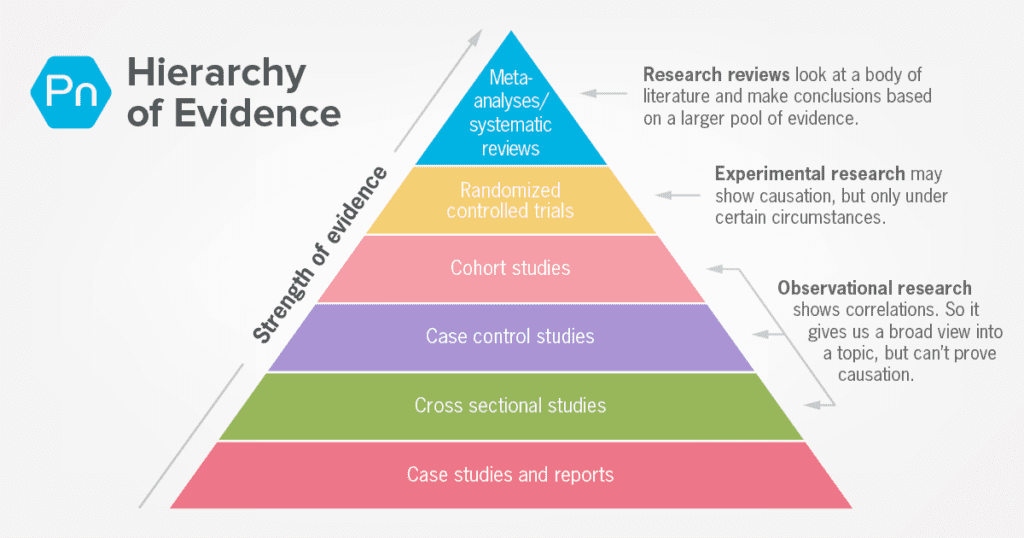

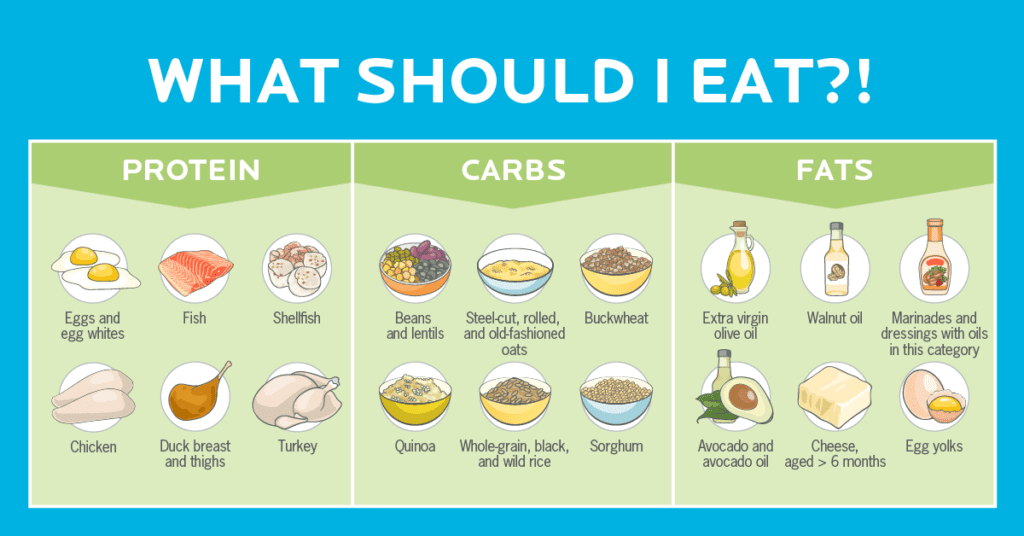
Share